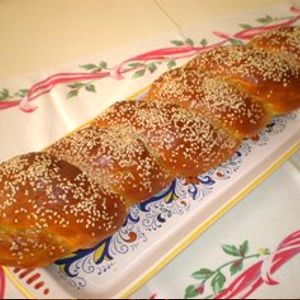 Please help us celebrate the Feast of Saint Joseph on Saturday, March 21st at 5:30pm.
Please help us celebrate the Feast of Saint Joseph on Saturday, March 21st at 5:30pm.
By honoring St Joseph with a donation to his Altar Table, a Parish Potluck and entertainment from the Parish Homeschool Association. Prepared Food Donations will start being accepted Saturday after 10:30 A.M. by the outdoor kitchen entrance on the west side (rectory) side of the building. (look for the pop up awning).
If you are unable to attend the Celebration, Food donations can be arranged ahead of time by calling or texting Susan Gallagher at 972-740-1362.
Sign up for potluck – click here!
Also see:
St. Joseph Novena (March 10th – March 18th)
O glorious St. Joseph, descendant of the kings of Judah, Inheritor of the virtues of all the patriarchs. I beseech you to intercede before The Sacred Heart of Jesus and implore Him to allow You to become a father to me; and to obtain for me the filial respect, confidence and love of a child towards you.
Present me O great Saint Joseph to the Blessed Trinity, with Whom You have a glorious and intimate bond and ask the Blessed Trinity to grant me Divine Light.
Obtain for me a lively devotion to Our Heavenly Mother, and protect me in both life and death, that I may have the happiness of dying as you did, in the friendship of Our Creator, and under the immediate protection of the Mother of God. Amen.
(Mention your intentions here)
Recite one Our Father, one Hail Mary, and one Glory Be.
OR
O glorious descendant of the kings of Judah, Inheritor of the virtues of all the patriarchs. Just and happy St. Joseph, listen to my prayer. Thou art my glorious protector, and shall ever be, after Jesus and Mary the object of my most profound veneration and confidence. Thou art the most hidden, though the greatest Saint, and art particularly the patron of those who serve God with the greatest purity and fervor. In union with all those who have ever been most devoted to thee I now dedicate myself to thy service; beseeching thee, for the sake of Jesus Christ, who vouchsafed to love and obey thee as a son, to become a father to me; and to obtain for me the filial respect, confidence and love of a child towards thee.
O powerful advocate of all Christians, whose intercession, as St. Theresa assures us, has never been found to fail, deign to intercede for me now, and to implore for me the particular intention of this Novena.
(Mention your intentions here)
Recite one Our Father, one Hail Mary, and one Glory Be.
Present me O great Saint to the adorable Trinity, with Whom thou hadst so glorious and so intimate a correspondence. Obtain that I may never efface by sin the Sacred Image according to the likeness of which, I was created. Beg for me that my divine Redeemer would enkindle in my heart and in all hearts, the fire of His Love, and infuse therein the virtues of His adorable infancy, His purity, simplicity, obedience, and humility.
Printable Novenas and More devotions to St. Joseph (PDF)
More information about St. Joseph’s Day
St. Joseph Altar Customs for the Three Tiered Altar
 The altar is constructed in three tiers, representing the three Persons of the Blessed Trinity. A statue of St. Joseph or a picture of the Holy Family is always placed on the top tier surrounded by flowers, greenery and fruit.
The altar is constructed in three tiers, representing the three Persons of the Blessed Trinity. A statue of St. Joseph or a picture of the Holy Family is always placed on the top tier surrounded by flowers, greenery and fruit.
Blessing of the Altar
All of the items on the altar – food, candles, medals, holy cards and fava beans – are blessed by a priest in a special ceremony the afternoon before the altar is “broken”. That evening people may visit to pray and to leave petitions. Donations are collected for the poor.
[Broken: The term broken means that the beautiful decorated food is served to the family and friends gathered at the ceremony]
Fresh Green Branch
At the place where the altar is erected, a fresh green branch is placed over the door. This indicates that the public is invited to be involved in the ceremony and to share in the food.
The Fava Bean
The gift of a blessed bean is the most well known of the customs associated with the St. Joseph’s altar. During one of Sicily’s famines, the fava bean thrived while other crops failed. It was originally grown for animal fodder, but because of its amazing resilience, it became the sustaining food of the farmers and their families. The dried bean is commonly called the lucky bean. Legend has it that the person who carried a lucky bean will never be without couns. The fava bean is also a token of St. Joseph’s Altar and a reminder to pray to St. Joseph.
More information about St. Joseph Altar customs (PDF)
St. Joseph’s Day Recipes
In the Italian Spirit of St Joseph’s Day here are a few recipe ideas to explore. The altar tradition is meatless but foods from all heritages are welcome.
St. Joseph’s Day Bread
 St. Joseph’s Bread is a bread that is traditionally served on St. Joseph’s feast day (Feast of San Guiseppe) which is March 19. The dough is shaped into a variety of designs for loaves that will adorn the St. Joseph’s Table. Traditional forms are crowns,crosses, staffs, wheat sheaves, images of St. Joseph, and braids of the Blessed Mother. The bread has a texture similar to a good homestyle white bread with a slightly sweet taste. Since St. Joseph was a carpenter by trade, breadcrumbs and sesame seeds signify sawdust.
St. Joseph’s Bread is a bread that is traditionally served on St. Joseph’s feast day (Feast of San Guiseppe) which is March 19. The dough is shaped into a variety of designs for loaves that will adorn the St. Joseph’s Table. Traditional forms are crowns,crosses, staffs, wheat sheaves, images of St. Joseph, and braids of the Blessed Mother. The bread has a texture similar to a good homestyle white bread with a slightly sweet taste. Since St. Joseph was a carpenter by trade, breadcrumbs and sesame seeds signify sawdust.
Some St. Joseph’s Day breads also include raisins. If you wish to add them, use 1/2 to 3/4 cup of golden raisins soaked in hot water for about 30 minutes to plump them. Drain them and add them to the dough after the first rise and before you form the dough into ropes. Our recipe directions are for making the dough with an electric stand mixer but, of course, you can mix and knead the dough by hand and shape into other designs. This bread is nice with butter or jam; it also makes a good sandwich bread, and a delicious French toast.
Recipe for St. Joseph’s Day Bread
(Makes 1 loaf – approx. 18-inches in length)
Ingredients:
2/3 cup warm milk, 105 – 115 degrees F.
1 (1/4-ounce) package dry active yeast
3 cups bread flour, divided
1/4 cup sugar
1 teaspoon salt
2 tablespoons melted butter
2 eggs
1/2 teaspoon anise seed or 1 teaspoon anise extract
Egg wash: 1 egg mixed with 1 tablespoon water
Sesame seeds
Directions:
Stir the yeast into the warm milk and allow to rest for 10 minutes.
Pour the yeast mixture into the bowl of an electric mixer. Add 1 cup of flour, sugar, salt, and melted butter. Beat the mixture with the paddle attachment for 2 minutes. Add the eggs, anise seed or extract, and another cup of flour. Beat for 2 more minutes.
Change from the paddle attachment to a dough hook. Add the remaining flour, 1/4 cup at a time, until the dough starts to come together. You may not need to add all of the flour. Then allow the dough hook to knead the dough on medium for 3 to 4 minutes. Transfer the dough to a greased bowl. Cover and allow to rise in a warm place until doubled in volume, about 1 hour.
Punch the dough down and divide it into 2 equal pieces. Roll each piece into a 20 – 22-inch rope. Place the 2 ropes on a parchment lined baking sheet. Loosely twist the ropes together, tucking the ends under. Cover and allow to rise until doubled in size, about 30 – 40 minutes.
Preheat the oven to 350 degrees F.
Brush the loaf with the eggwash and sprinkle liberally with sesame seeds.
Bake for 30 to 35 minutes or until golden brown. Transfer to a wire rack to cool.
(Source: MangiaBenePasta.com)